On the third day of Navratri, a sense of serenity, tranquility and purity envelopes the devotees as they pay homage to Maa Chandraghanta, the embodiment of grace and the divine consort of Lord Shiva.
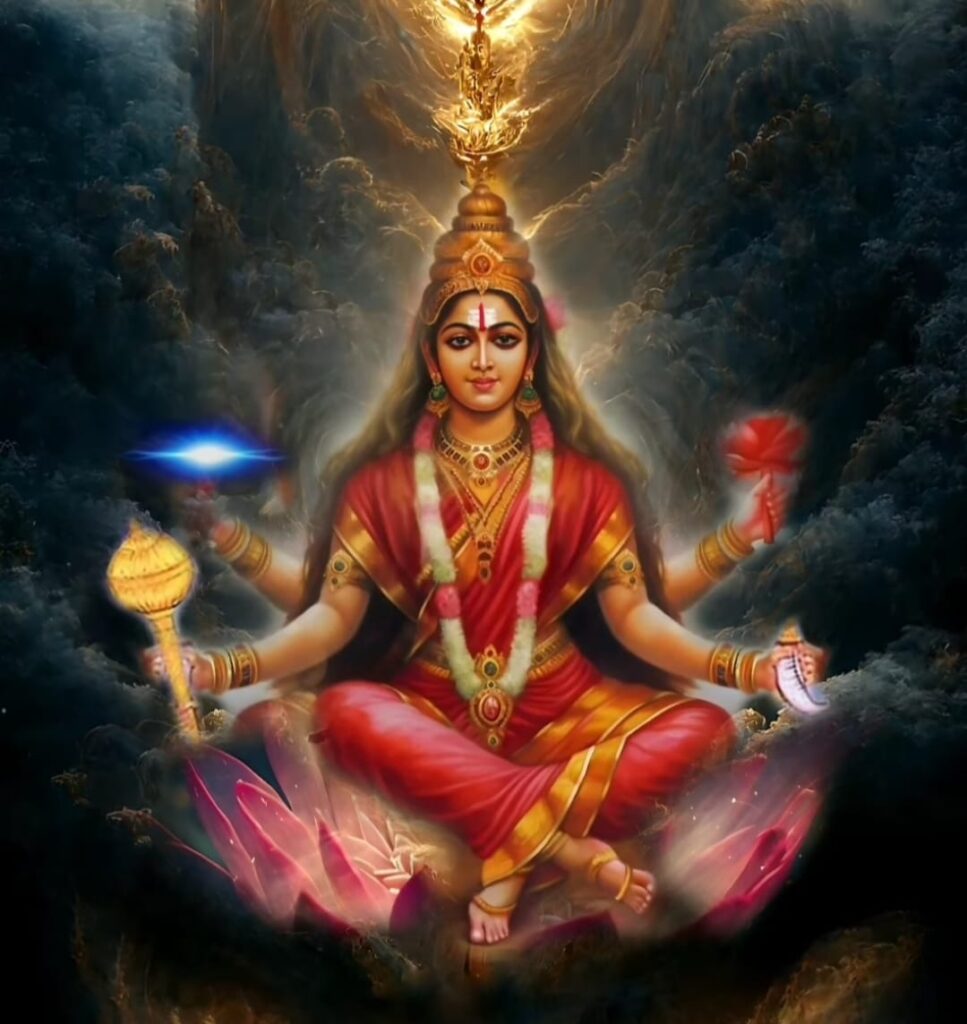
Chandraghanta, the third manifestation of Goddess Durga, is a symbol of bravery and grace. Her name is derived from “Chandra” (the moon) and “Ghanta” (bell). According to legend, she earned this name after marrying Lord Shiva, who adorned a moon-shaped bell on her forehead.
Maa Chandraghanta, also known as the “married” form of Devi Parvati, is a guardian against malevolent spirits.
In a previous incarnation, she was known as Devi Sati and was wed to Lord Shiva. Tragically, she sacrificed her life when her father insulted her divine spouse.
In her subsequent birth as Parvati, the daughter of the mountains, she embarked on rigorous penance to earn Lord Shiva’s hand in marriage. Her unwavering devotion earned her the name Maa Bramhacharini, and Lord Shiva eventually agreed to wed her.
As the preparations for their marriage were underway, a peculiar procession accompanied Lord Shiva on their auspicious day. Ghosts, sages, goblins, ghouls, aghoris and ascetics all joined the procession. Lord Shiva himself wore a garland of snakes and covered his body with ashes. His hair was adorned with serpents, giving him a formidable and terrifying appearance.
This alarming sight left Maa Parvati’s relatives in shock and most of them fainted in horror. Fearing the embarrassment this would cause to both her family and Lord Shiva, Maa Parvati transformed into the fearsome avatar of Chandraghanta.
In her terrifying form, her complexion turned golden, and she possessed ten arms. Her tenth arm was raised in blessing, while the other nine held various objects and weapons. She brandished a trident, a watering pot, a mace, a bow and arrow, a sword, a bell and a lotus.
Approaching Lord Shiva in this fearsome manifestation, Maa Chandraghanta convinced him to adopt a more noble appearance. Lord Shiva agreed and transformed into a handsome prince, bedecked with exquisite jewels and ornaments.
Finally, the marriage of Lord Shiva and Maa Parvati took place, accompanied by prayers and rituals.
Appearance:
Chandraghanta is depicted as a radiant goddess with a golden complexion. She has ten arms, each holding a different weapon and symbol. Her most distinctive feature is the half-moon or Chandra that adorns her forehead. She wears a bright orange saree and ornaments that symbolize her divinity. Her image exudes strength, elegance, and a compassionate aura.
Astrological Connection:
Chandraghanta is associated with the planet Venus, symbolizing love and beauty. Her worship is believed to strengthen Venus in one’s astrological chart and enhance qualities of charm, grace, and sensuality.
Method of Worship:
Devotees worship Chandraghanta on the third day of Navaratri. The following steps outline a traditional way to perform her worship:
- Meditation: Begin with meditation to calm the mind and connect with the goddess’s energy.
- Altar Setup: Create a sacred space with an image or idol of Chandraghanta. Decorate it with flowers, incense and vibrant orange or red cloth.
- Mantras: Chant mantras dedicated to Chandraghanta. One of the most popular mantras is “Om Devi Chandraghantayai Namah.”
- Offerings: Offer sacred flowers, especially red ones, along with sweets and dairy products.
- Light a Lamp: Light a lamp in front of the goddess while singing devotional songs.
- Prayers: Offer your heartfelt prayers, seeking Chandraghanta’s blessings for courage, protection and success.
Mantras and Translations:
- “Om Devi Chandraghantayai Namah” – I bow to the goddess Chandraghanta.
Cosmic Connection:
Chandraghanta’s association with the moon represents the calming and soothing influence of the lunar energy. This aspect of her character is a reminder that even in the midst of battle and challenges, there is an underlying tranquility that can be harnessed through grace and inner strength.
Significance:
Chandraghanta represents the qualities of grace, beauty and bravery. Her worship bestows devotees with the strength to overcome obstacles and face adversity with courage and elegance. She is a symbol of the fierce yet compassionate divine feminine energy that guides and nurtures us through the turbulent journey of life.
Chandraghanta’s story and worship during Navaratri inspire us to embrace our inner strength, maintain our grace under pressure, and triumph over adversities with valor and dignity.
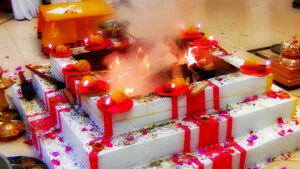
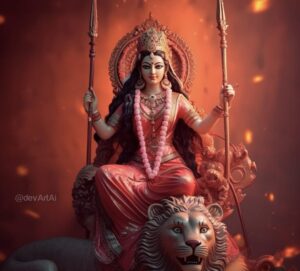

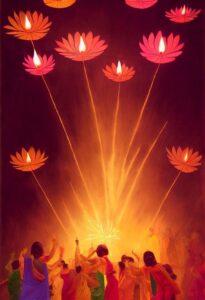
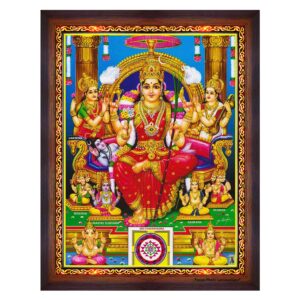
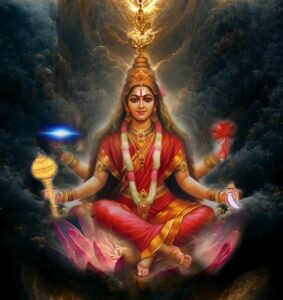
Hi would you mind sharing which blog platform you’re
using? I’m going to start my own blog soon but I’m having a tough time making a
decision between BlogEngine/Wordpress/B2evolution and Drupal.
The reason I ask is because your design seems different then most blogs
and I’m looking for something unique. P.S My apologies
for getting off-topic but I had to ask!
Hi I am using wordpress dear